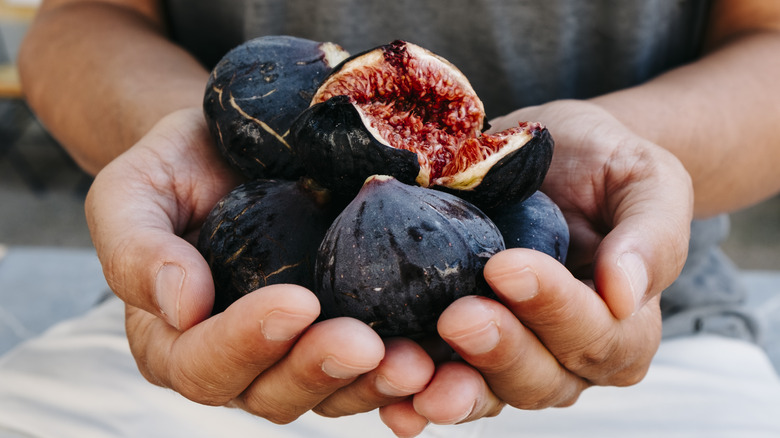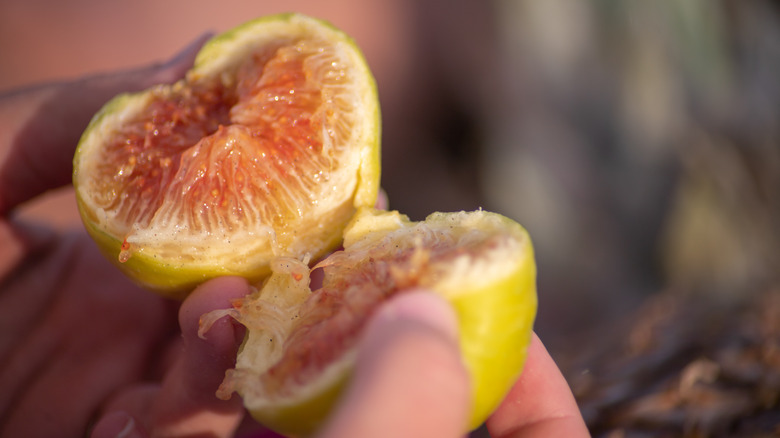The Unexpected Fruit That Can Help Lower Your High Cholesterol
If your yearly blood draw shows an increase in your LDL, or "bad," cholesterol, your doctor might recommend dietary changes as the first line of defense against future health problems. While the body needs cholesterol, too much of it can lead to the buildup of plaque along the artery walls. Eventually, this can increase one's risk for stroke or heart attack over time. According to the Cleveland Clinic, we want our total cholesterol levels to fall below a measurement of 200. A healthy LDL cholesterol measurement is one that falls below 100 and we want to see an HDL cholesterol measurement ("good" cholesterol) of 60 or higher.
According to 2022 survey research published in Current Developments in Nutrition, over 11% of adults in the U.S. ages 20 and older were found to have high cholesterol between the years of 2013 and 2018. Diet plays a large part in our cholesterol levels. Foods high in saturated fat (or unhealthy fat) can elevate bad cholesterol levels, while veggies, whole grains, and fruit can help us maintain healthy levels of cholesterol. When it comes to fruit specifically, we have good news for you if you're a fan of figs.
The fiber content in figs may help lower bad cholesterol
Appearing purple or green in color, these sweet fruits contain a fair amount of fiber. In one medium-sized raw fig, the U.S. Department of Agriculture (USDA) reports that you'll find 1.45 grams of fiber. In 1 cup of dried figs, this number jumps to 15.7 grams (via USDA). However, dried figs also come with a lot more calories and sugar than raw figs so they are best consumed in moderation.
It's the soluble fiber content in figs that may benefit our cholesterol. According to 2019 research published in the scientific journal Nutrients, consumption of soluble fiber has been linked with reductions in LDL cholesterol. The reason being is that soluble fiber cannot be digested by the body. Instead, it absorbs cholesterol — subsequently reducing the amount of cholesterol being absorbed by the liver — and is then expelled from the body as waste.
Some research shows mixed results regarding figs and cholesterol
On the other hand, some research hasn't shown fig consumption to be an effective means of lowering LDL cholesterol. Researchers from a 2011 study published in the Annals of Nutrition & Metabolism looked at whether or not eating dried figs would produce any changes in the lipid concentrations of patients with high cholesterol. In one group, participants ate 120 grams of dried California Mission figs each day for five weeks in addition to their normal everyday diet. The other group stuck with their regular diet without the addition of figs. The groups then switched dietary conditions for the next five weeks. No LDL cholesterol-lowering effects were observed in connection with eating figs, but total cholesterol levels did appear to increase.
Eating a well-rounded diet is important when it comes to lowering our cholesterol. Although the research is mixed, eating figs may potentially support this goal — along with oats, eggplant, lentils, strawberries, soy, salmon, and more.



